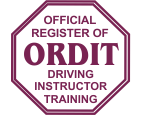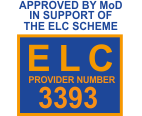15 Giving appropriate signals
 The Highway Code states you should give signals to warn and inform other road users, including pedestrians, of your intended actions. The main signals you are likely to use on the test are direction indicator signals.
The Highway Code states you should give signals to warn and inform other road users, including pedestrians, of your intended actions. The main signals you are likely to use on the test are direction indicator signals.
What the examiner is looking for
The examiner will expect you to give clear signals
- In plenty of time, having checked it is not misleading to signal at that time
- If necessary, before changing course or direction, pulling up or moving off
- Always on the approach to a junction when not going straight ahead unless on a road with multiple lanes where your lane is clearly marked as only going in one particular direction.
The examiner will also expect you to cancel the signal once it has served its purpose.
Driving faults recorded
15 Signals
Necessary:
- Omits signals when they could benefit other road users.
Correctly:
- Gives signals in the wrong direction.
- Gives misleading signals.
- Does not cancel signals after completion of manoeuvre.
- Using any signal not in the Highway Code.
Timed:
- Gives signal too early.
- Gives signal too late.
- Signals for too short a period of time.
- Signals for too long a period of time.











